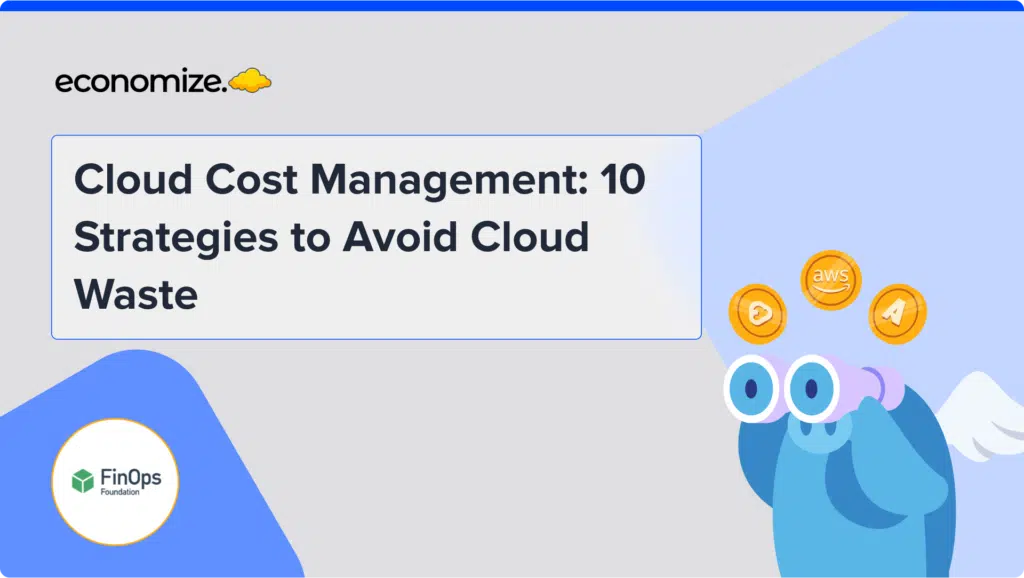With the increasing use of cloud services, it has become imperative to understand how cloud storage is priced to help reduce billing costs for organizations that process large workloads on GCP. Knowing the different GCP storage classes and their pricing is essential for GCP users to choose the most cost-effective storage options for their workloads.
GCP offers five different storage classes, each tailored to specific workloads and use cases. While some storage classes are best suited for frequently accessed data, others are designed for data that is rarely accessed. In this article, we will delve into the different GCP storage classes, how they function, what their features are, and how they are priced.
What are GCP Storage Classes?
Google Cloud Platform provides a range of storage options for organizations that require a secure, scalable, and reliable way to store their data in the cloud. GCP Storage Classes refer to a set of service tiers that offer different levels of durability, accessibility, and performance at various price points. These classes enable users to optimize the cost and performance of their cloud storage by choosing the most suitable class for their specific use case.
When you skip the ‘GCP Cost Optimization 101‘ article and check your bill like…
Why are there different storage classes?
There are different storage classes to cater to a wide range of workloads and use cases. Not all data is equal and not all data requires the same level of accessibility, durability, and performance. The need for these different classes stems from the fact that storing data in the cloud can incur costs for organizations, and different data storage scenarios have different cost implications.
GCP Storage Classes & Pricing
In the following sections, we will explore each of the different storage classes offered by GCP, their features, pricing, and recommended use cases.
Standard Storage Class
The Standard Storage class is a general-purpose storage class that is suitable for frequently accessed data. It provides a balance between access times, availability, and cost, making it ideal for workloads that require a moderate level of performance, availability, and durability. The Standard Storage class uses the Google Cloud Storage Multi-Regional location type and provides low-latency, high-performance storage.
Use Cases & Pricing
The Standard Storage class is best suited for a wide range of applications and workloads, including websites, mobile applications, gaming, and streaming. It is also ideal for data analytics and machine learning workloads that require frequent access to data. The Standard Storage class is recommended for workloads that have a medium to high read and write frequency and require high availability and durability.
In terms of pricing, the Standard Storage class charges for the amount of data stored, the number of operations performed, and the amount of data transferred. The pricing for Standard Storage class is as follows:
- $0.020 per GB per month for storage
- $0.004 per 10,000 Class A operations
- $0.0004 per 10,000 Class B operations
- $0.12 per GB for data egress (if accessed from outside of Google Cloud)
Nearline Storage Class
The Nearline Storage class is designed for infrequently accessed data that requires low latency and fast access times. It is an ideal storage solution for backups, long-term archives, and disaster recovery. The Nearline Storage class provides a lower storage cost than the Standard Storage class, but with a higher retrieval cost.
Use Cases & Pricing
The Nearline Storage class is best suited for data that is accessed less than once a month and stored for a minimum of 30 days. It is ideal for backup and disaster recovery workloads that require low latency and fast access times. The Nearline Storage class is also suitable for long-term storage of data that needs to be retained for regulatory or compliance reasons.
In terms of pricing, the Nearline Storage class charges for the amount of data stored, the number of operations performed, and the amount of data transferred. The pricing for Nearline Storage class is as follows:
- $0.010 per GB per month for storage
- $0.01 per GB for data egress (if accessed from outside of Google Cloud)
- $0.01 per 1,000 Class A operations
- $0.01 per 10,000 Class B operations
- $0.03 per GB for data retrieval (if accessed from Google Cloud)
Coldline Storage Class
The Coldline Storage class is designed for data that is accessed less than once a year and requires low latency and fast access times. It is a cost-effective storage solution for data that is rarely accessed but must be retained for long periods. The Coldline Storage class provides a lower storage cost than the Nearline Storage class, but with a higher retrieval cost.
Use Cases & Pricing
It is ideal for disaster recovery workloads, legal archives, and financial records that need to be retained for long periods of time. The Coldline Storage class is also suitable for data that must be retained for regulatory or compliance reasons.
In terms of pricing, the Coldline Storage class charges for the amount of data stored, the number of operations performed, and the amount of data transferred. The pricing for Coldline Storage class is as follows:
- $0.004 per GB per month for storage
- $0.01 per GB for data egress (if accessed from outside of Google Cloud)
- $0.05 per GB for data retrieval (if accessed from Google Cloud)
Archive Storage Class
The Archive storage class is the most cost-effective GCP storage class. It is specifically designed for data that is accessed infrequently or stored for long periods. This class is perfect for workloads that require significant storage capacity, long retention times, and high durability.
This storage class comes with several features:
- Data can be stored in the Archive storage class for a minimum of 90 days, and there is no maximum storage duration.
- Data can be accessed within milliseconds, and retrieval times can range from a few minutes to hours, depending on the amount of data to be retrieved.
- Archive storage class is durable and reliable, with a 99.999999999% annual durability rate.
Use Cases & Pricing
The ideal use cases for the Archive storage class include media archives, long-term backups, and disaster recovery solutions. It is also ideal for compliance data that requires long-term retention, such as tax and financial records or medical images.
Pricing for the Archive storage class is structured differently than other storage classes. The storage cost is very low, but it is charged per gigabyte per month, which makes it very expensive if there are many retrieval requests. In addition to the standard storage cost, there is a data retrieval fee, which varies depending on the volume of data retrieved.
Other pricing factors that can affect the cost of this storage class include network egress fees and operation costs. Here is an overview of the pricing for the Archive storage class:
- Storage cost: $0.00099 per GB/month
- Data retrieval fee: $0.05 per GB
- Network egress fees: vary by region
- Operation costs: $0.05 per 10,000 class A operations, $0.004 per 10,000 class B operations
Cost Factors in GCP Storage Classes
GCP storage costs are based on a variety of factors that can impact the total amount a user pays. These factors can include data storage, operations, retrieval, and early deletion costs. Understanding each of these factors is essential in accurately predicting and controlling costs.
Data Storage Costs
Data storage costs are calculated based on the amount of data stored in a particular storage class. The pricing structure for data storage is based on the number of gigabytes (GB) stored, and it varies based on the storage class selected. As a user stores more data, the price per GB decreases, making it more cost-effective to store larger amounts of data.
- In the Standard storage class, the first 50 terabytes (TB) of data stored per month are priced at $0.020 per GB, while in the Nearline storage class, the first 50 TB are priced at $0.010 per GB.
Operations Costs
Operations costs are calculated based on the number of requests made to the storage system. This includes operations such as listing objects, creating buckets, and overwriting data. The pricing structure for operations is based on the number of operations performed per month, and it varies based on the storage class selected. Users can reduce operations costs by optimizing their code and minimizing the number of requests made to the storage system.
- In the Standard storage class, the first 50,000 class A operations per month are free, while additional class A operations are priced at $0.05 per 10,000 operations. In contrast, in the Nearline storage class, the first 5,000 class A operations per month are free, and additional operations are priced at $0.30 per 10,000 operations.
Retrieval Costs
Retrieval costs are calculated based on the amount of data retrieved from the storage system. This includes retrieving data to read or write it to another system, such as a virtual machine or application. The pricing structure for retrieval costs varies based on the storage class selected. Retrieval costs can be minimized by only retrieving necessary data and archiving data that is not frequently accessed.
- In the Standard storage class, there are no retrieval costs. However, in the Nearline storage class, there is a $0.01 per GB retrieval fee for data that is less than 90 days old. In the Coldline storage class, there is a $0.05 per GB retrieval fee for data that is less than 90 days old.
Early Deletion Costs
Early deletion costs are calculated based on the amount of data that is deleted before the minimum storage duration for a storage class is reached. The pricing structure for early deletion costs varies based on the storage class selected. Users can avoid early deletion costs by ensuring they have a clear understanding of their data retention requirements and choosing the appropriate storage class for their use case.
- In the Standard and Nearline storage classes, there are no early deletion costs. However, in the Coldline storage class, if data is deleted before 90 days, there is a $0.03 per GB early deletion fee. In the Archive storage class, if data is deleted before 365 days, there is a $0.01 per GB early deletion fee.
GCP Storage Classes Services & Pricing List – Cheat Sheet
The pricing of the storage classes varies based on the storage duration, storage location, data retrieval, and network egress.
| Storage Class | Storage | Network Egress | Data Retrieval | Operations Cost | |
|---|---|---|---|---|---|
| Standard | $0.020 per GB-month | Free within GCP, $0.12 per GB to other providers | Free | $0.05 per 10,000 class-A operations $0.004 per 10,000 class-B operations |
|
| Nearline | $0.010 per GB-month | Free within GCP, $0.12 per GB to other providers | $0.01 per GB retrieved | $0.10 per 10,000 class-A operations $0.01 per 10,000 class-B operations |
|
| Coldline | $0.004 per GB-month | Free within GCP, $0.12 per GB to other providers | $0.05 per GB retrieved | $0.10 per 10,000 class-A operations $0.01 per 10,000 class-B operations |
|
| Archive | $0.0012 per GB-month | Free within GCP, $0.12 per GB to other providers | $0.05 per GB retrieved | $0.10 per 10,000 class-A operations $0.01 per 10,000 class-B operations |
Conclusion
Understanding the different storage classes offered by Google Cloud Platform is an essential part of optimizing your cloud costs. With the ability to choose the storage class that best fits your specific use case, you can significantly reduce your costs and ensure that you are only paying for the resources you need.
With the right knowledge, tools, and strategies, you can take control of your GCP costs and achieve significant savings for your business. Click here to get started with our demo and begin optimizing your cloud costs today!










